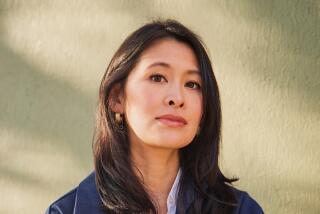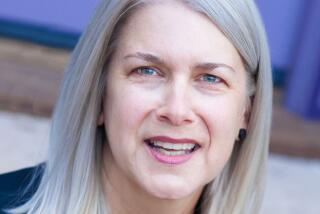Discoveries
The Gray Earth
Galsan Tschinag, translated from the German by Katharina Rout
Milkweed: 303 pp., $24
Galsan Tschinag was born in the 1940s in Mongolia and educated in Germany. After university, he returned to Mongolia to lead what was left of his people, the Tuvans, back to their ancestral homeland in the Altai Mountains of Mongolia. His autobiographical novel “The Blue Sky” tells the story of that journey. “The Gray Earth” takes us back into a fictionalized version of Galsan’s childhood — the decisions he faced as a young man in Mongolia between his profound calling as a shaman and his family’s desire to give him a more traditional education in boarding school. In this volume, he joins his siblings at a state-run boarding school, where he is immediately confronted with the communists’ effort to erase his native language and traditions. The young man, then called Dshurukuwaa in the novel, relies on his visions to preserve his heritage. This is a landscape we might never have known — a line of snow-white yurts stretching across the steppes, the dark and frozen ground of the winter camps, the disappearing glaciers, the flocks and herds. The ground beneath this novel slips under your feet even as you read; a landscape threatened by global warming and other environmental degradations; a way of life disappearing faster than you can turn the pages — yak cheese, mutton and dried juniper. A language fighting for its life.
Old Border Road
Susan Froderberg
Little, Brown: 292 pp., $23.99
This remarkable debut novel, the story of a girl, begins with an adobe house and a road that runs south to north, “from forests petrified to those old-conifered, from cottonwoods to silver fir, diamondback to amanita, erg dune to tidal flat, and sandstone to agate, from what is to what has been, from memory to what might be.” It begins when Katherine’s mother dies and the happy family in the adobe house ... but no, it begins when Katherine falls in love with Son and marries far too young in her mother’s stained old wedding dress. “We walk out into air soft as baby hair, air that has weight to it too, air that makes ferns and leaves and needles shimmer in droplets that tick wet to the earth.” Like the Tuvans in “The Gray Earth,” Katherine and Son have to struggle to create a place, remember a language, the names of things. Son is the son of a rancher and he takes Katherine to live in his family’s old adobe house. Susan Froderberg keeps circling back to beginnings ... she starts Katherine’s new life again and again, dashing hopes, revealing the meanness in Son, and the difficulty of making a living from the dry earth. “How to describe it, this light? How to tell of the day? How to tell of the rarity of it, the pure aridity of it, the feeling of driving away in it?”
Nature Stories
Jules Renard, translated from the French by Douglas Parmée, with drawings by Pierre Bonnard
New York Review Books: 147 pp., $14.95
Jules Renard grew up in the French countryside in the late 1800s but lived much of his adult life in Paris among the literati, although he was able, after the birth of his first child, to buy a house in his native village and was soon appointed mayor. This is the first time these little stories — of animals, gardens, fish, sunrises and birds — have been translated into English. It is a lively, stylish volume — each piece with its accompanying drawing. The stories and portraits were originally written for newspapers and magazines, feuilletons that captured the personalities and contributions of various species. It was the author’s profound belief that each species of plant and animal had a distinct voice and that there were very specific conversations between species — hunters and the hunted; humans and plants; the flies and the oxen. From “Bats”: “ … down there in unhealthy tunnels and damp cellars. A shred of night creeps into every single corner ... .” Pierre Bonnard’s ink drawings are loose and evocative, especially the birds. “They teach me something every day,” wrote Renard. “They put crazy brackets round my house.”
Salter Reynolds is a Los Angeles writer.
More to Read
The biggest entertainment stories
Get our big stories about Hollywood, film, television, music, arts, culture and more right in your inbox as soon as they publish.
You may occasionally receive promotional content from the Los Angeles Times.






